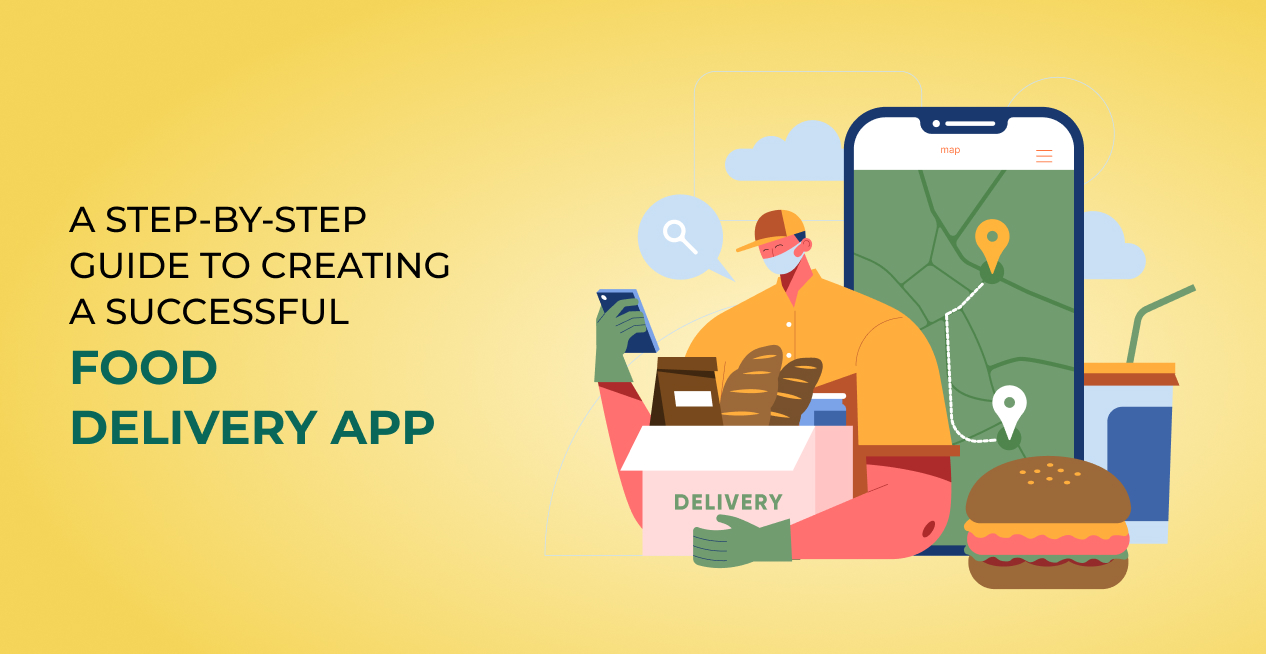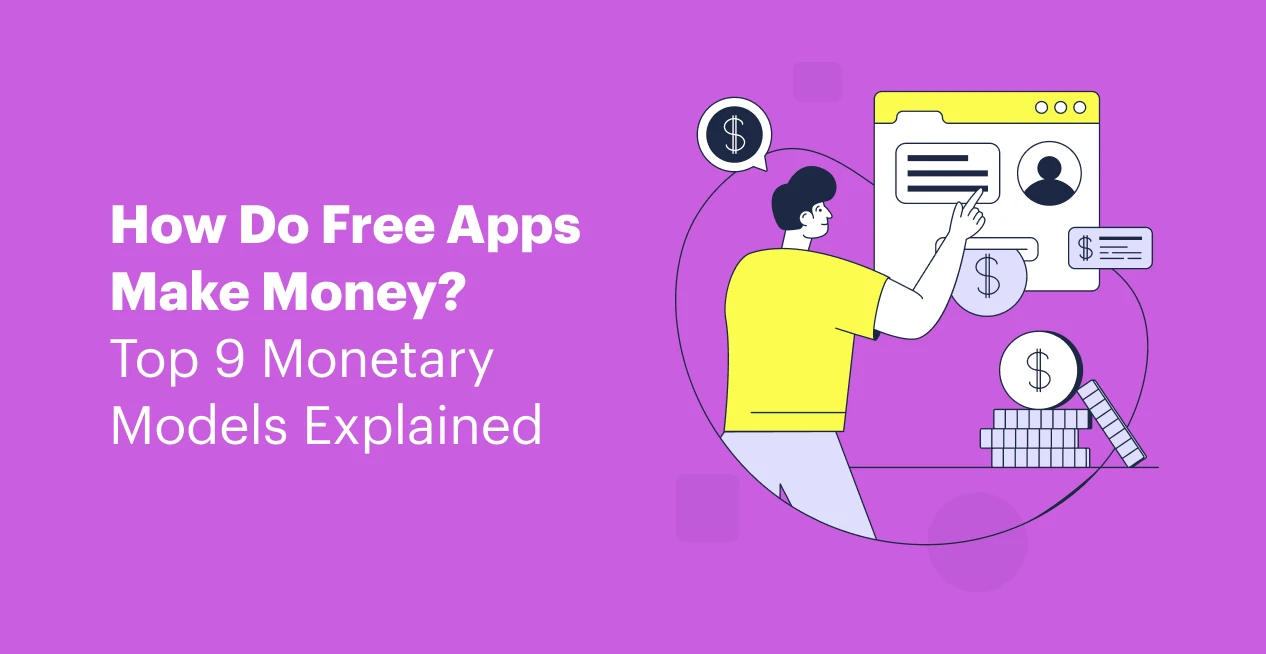With reduced costs and increased options, food delivery applications bring the kitchen to its customers. Food delivery apps have turned into boons for the hustlers who are habituated to working odd hours. The rise of such applications has also led to the demand for mobile and web development companies that can develop food ordering and delivery apps. Before we proceed into how food delivery applications are created, let us have a look at the numbers that are evidence of the rise in popularity of food-ordering delivery apps.
How do Food Delivery Apps work?
An on-demand delivery application is a mobile and web application that is a centralized platform for receiving and delivering orders for food. Each on-demand delivery app comprises four integral applications which are- Customer Application, Vendor Driven Application, Driver Partner Application, and Admin Dashboard. Different applications serve different purposes in the app. A customer places an order via the customer app for a meal. A vendor accepts the order through the merchant application and completes the order while waiting for the driver. A driver is allocated to an order through the Driver Partner application and the order is then delivered to the customer. Admin dashboard administrates all these phases of online ordering and delivering of food.
Steps to Create a Successful Food Ordering App
A successful food ordering app like Zomato often gets two very important things right: back-end and front-end development. For an on-demand food delivery application to be successful, it’s important to take care of minute details throughout the entire application development cycle. From idea validation to product deployment, an interactive robust application is meticulously designed.
The front-end development of the application refers to:
- User Interface Design and Development
- Designing the layout of the interface
- Deciding how the different pages will interact with customers
Back-end development includes:
- Data Management
- Programming
- Authentications and API Integrations
- 3rd party setup
And other functions that help browsers interact with databases, and store, understand, and delete data.
Team Requirements
The food delivery app development team requires certain experts to build a food delivery app. Here’s a list of professionals that should be on the team for a variety of functions:
- Front-end developer: for all front-end development
- Back-end developer: developers, programmers
- UI/UX Designer: for interface design
- Business Analyst: To understand the food business target audience and administration
- Project Manager: to supervise the development project and collaborate with stakeholders
- DevOps: Development and Operations experts
- Quality Assurance: QA testing and debugging for minimized failures once the product is launched.
Once the team is in place, here are a few simple steps that businesses can follow to create a successful mobile app for food ordering in a jiffy:
Step 1: Research Market Trends
No software development project should start without thorough research of the market trends that are prevalent in the industry. Currently, one can see an increased rise in demand for food delivery applications equipped with virtual assistants, wearable devices, Chatbots, etc. Understanding and implementing these trends are bound to increase the popularity of the online food ordering and delivery platform.
Step 2: Food Delivery Model
The next important step is to pick the right food delivery model for your food app. There are four main food ordering and delivery models. These are:
Order only Model
Also known as the Platform to Customer model, this model connects the customer to a restaurant, and delivery services are provided either by the restaurant itself or given to third-party delivering services. This food app business model is easy to start as it requires less capital.
The Order and Delivery Model
In an order and delivery model, there are three stakeholders involved: the Admin or platform owner, the delivery service provider, and the restaurant owners. The delivery and fulfillment of food orders are taken care of by the third party which collaborates with the admin to provide completion of food orders to the customers.
Fully integrated Food Delivery Model
In the Full Stack Model, one service provider takes care of the entire food ordering and delivery process. From the preparation to drop-off, the service provider takes care of all aspects of Food ordering, fulfillment, and delivery. This is also the reason why this model is unique and demands a high capital investment at the start. However, it also delivers high ROI once the app starts generating revenue. In this delivery model, there are further options for building the app –
- Start your kitchen, hire your entire staff and then build a fully functional online ordering and food delivery application or
- Hire cloud kitchens that will prepare the food when an order is placed and deliver it to the customer under the company’s banner.
Restaurant-to-Consumer Model
Restaurant-to-consumer(R2C) food businesses deliver meals from restaurants to consumers. These businesses are full-fledged restaurants and food trucks that directly receive orders and deliver through their delivery personnel. Examples of R2C food delivery models are Dominoes, Pizza Hut, etc
Step 3: Research the Target Market
There are three main demographics that a meal delivery application caters to
- College students and young adults
- Parents
- Working professionals
Researching thoroughly and understanding the target audience is crucial for any successful food delivery app.
Step 4: Include the main features every app should have
There are some basic features that every food delivery application must have.
These basic features are divided into three categories:
Features for Customers
- A SignUp/Register feature
- Advanced Search and Filters option
- Automated/ Real-Time Location Detection options
- Homepage for Restaurants’s introduction
- Order Placement/ cart feature
- Secured Online Payment gateway
- Review/Comment/Rating feature
Restaurant Dashboard
- Contract and Registration
- Product Listing
- Notification for new orders
- Earning, History Payout graphs
- Refund/Cancellation history
Features for Delivery Agents
- Option to create a User Profile
- Notifications/Alerts Panel
- Multiple Deliveries Schedule option
- Integration of Google Maps feature
- Call & Chat Options
Admin Dashboard features
- Managing Order feature
- Real-time Menu Update option
- Payment/Commission Administration button
- Offers/Coupons Code Generation
Step 5: Technology Stack Right
Different models require different technologies. Some of the regular tech stack required for different features are:-
For Design:
Generic Material Design
For developing the Mobile App
- Hybrid (React Native or Flutter)
- Native App (Swift for iOS / Kotlin for Android)
For developing Web App & Backend
- React Js
- Node Js
- Angular Js
- JAVA
For the Database
- MySQL
- MongoDB
For the Server
- Amazon AWS
- Google Cloud
- Microsoft Azure
For Payment gateway
- Square API
- Braintree
- CC Avenue
For Restaurant and Menu listing
- Grubhub API
- FourSquare API
To find user’s location
- Google Places API
- Google Maps
- Core Location Framework
Push notifications
- Amazon SNS
- Twilio
- Message Stack
- Firebase Cloud Messaging
How much does it cost to develop a Food Delivery App?
Food delivery app development cost depends on a variety of factors such as the number of platforms, feature list, the number of integrations, etc. The cost can be predicted only after the inception phase after functional specifications have been decided and visual prototypes developed.
Another factor that drives an application’s cost is the time taken by each phase. While UI/UX design can take up to 50 hours, development can take up to 150+ hours. The cost is often calculated on an hourly basis and thus an experienced team can further reduce cost while delivering quality.
Case Study- MyTab
MyTab is an excellent case study that should be studied to understand the food delivery applications better. MyTab is an excellent on-demand food delivery application that is looking to revolutionize food and beverage delivery and facilitate the process of placing and picking an order.
As a food hospitality industry application, MyTab streamlines transactions between restaurant owners and customers. It allows businesses to serve their customers food and beverages quickly and securely. Integrated with a geolocator and multiple venues list, it is an excellent example of a food delivery application.
Conclusion
Food Delivery applications are all the rage right now, and rightly so. Their popularity is only bound to rise in the coming years. Businesses that are looking to invest in developing a food delivery application should start by finding the best Mobile App Development services in the market. Well established and reliable mobile app development company like OpenXcell can help understand the company’s needs and offer expert mobile app development services to the business.









